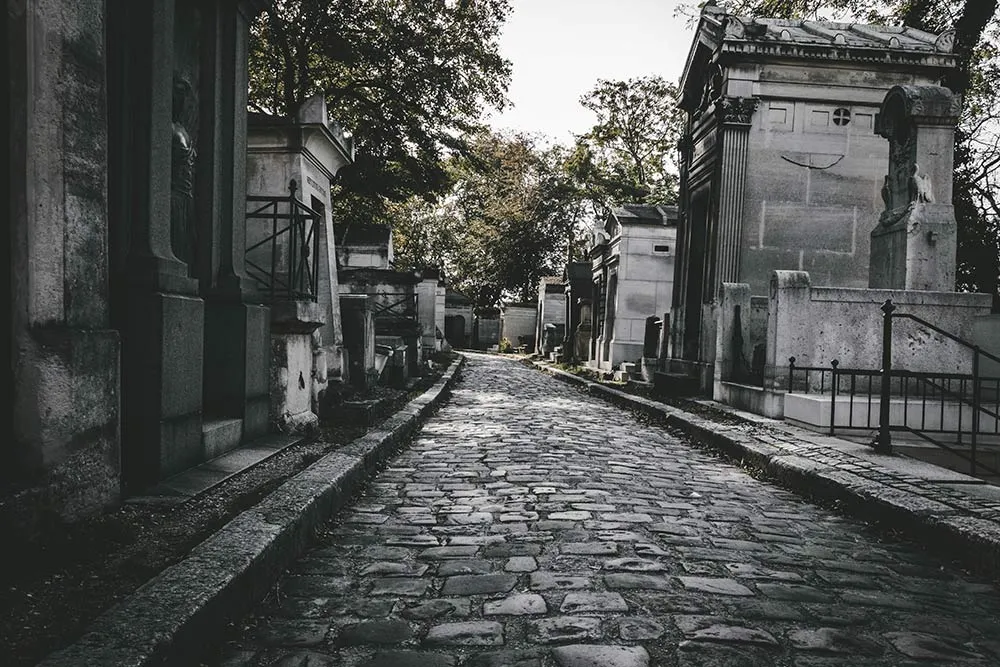Italy, renowned for its magnificent architecture, rich cultural heritage, and exceptional cuisine, holds a hidden world beneath its bustling surface — ancient catacombs. Unlike the vibrant beauty above, these underground burial chambers offer an intriguing journey into the mysteries of history and spiritual beliefs. Far from being mere relics of the past, Italy’s catacombs stand as underground museums, preserving the stories and faiths of generations long gone.
From major cities like Rome and Naples to the island of Sicily, Italy boasts an extensive network of catacombs, each with its own unique history and charm. Descending into their dimly lit corridors, visitors are greeted by fascinating architecture, ancient artworks, and the solemn quietness of these sacred spaces. Exploring Italy’s ancient catacombs is not just a distinctive travel experience but also an opportunity to gain deeper insights into the nation’s history, culture, and spirituality.
What Are Catacombs? A Journey Through Time
Catacombs are underground passageways and burial chambers, often constructed by early religious communities. In Italy, they hold a long and diverse history tied to the development of faiths, particularly Christianity and Judaism.
During ancient Roman times, burials within city limits were prohibited for sanitary and religious reasons. As a result, early Christians and Jews sought out areas beyond city boundaries to create resting places for their loved ones and followers. The first catacombs in Italy date back to the 2nd century AD, primarily in Rome, and later expanded to other regions like Naples, Sicily, and nearby areas.
Initially, catacombs were simple underground tunnels carved into the earth, but over time, they evolved into elaborate networks with multiple levels, corridors, and chambers. The walls of these catacombs were often adorned with frescoes, carvings, and religious symbols, reflecting the beliefs and artistic expressions of their era.
In early Christian history, catacombs served not only as burial sites but also as secret gathering places for worshippers. These underground sanctuaries were where Christians prayed, conducted rituals, and sought solace during times of persecution. Many early saints and popes of the Catholic Church were also buried in Rome’s catacombs, making these sites significant pilgrimage destinations for Christians worldwide.

Discovering Italy’s Most Famous Catacombs
Italy is home to numerous iconic catacombs, each offering a unique story and allure. Below are some of the most notable ones you should explore during your visit to the country:
Rome’s Catacombs: The Capital of the Underground World
Rome, often referred to as the “Eternal City,” houses some of Italy’s most significant and well-known catacombs. These underground sites, primarily Christian and Jewish, were constructed between the 2nd and 5th centuries AD.
Prominent Christian Catacombs in Rome:
- Catacomb of St. Callixtus (San Callisto): As one of the largest and most important in Rome, this catacomb served as the burial site for many popes and martyrs. Its intricate system of tunnels stretches nearly 12 miles, featuring burial chambers and chapels adorned with ancient frescoes and sculptures.
- Catacomb of St. Sebastian (San Sebastiano): Named after St. Sebastian, a Christian martyr, this site is renowned for its stunning frescoes and the shrine dedicated to the saint, making it a popular destination for pilgrims and visitors.
- Catacomb of St. Domitilla (San Domitilla): Among the oldest and best-preserved catacombs in Rome, it offers insights into early Christian art and architecture. Visitors will also find an exquisite subterranean basilica adorned with remarkable paintings and sculptures.
Jewish Catacombs:
- Jewish Catacomb of Vigna Randanini: One of the few Jewish burial sites remaining in Rome, it provides a unique glimpse into the history and culture of the city’s ancient Jewish community. Its distinctive architecture and Jewish symbols etched into the walls make it a fascinating site.

Naples’ Catacombs: Mysteries Underneath a Vibrant City
Naples, Italy’s third-largest city, possesses a rich network of catacombs that reflect its diverse and layered history. These catacombs span Christian, Greco-Roman, and even plague-era burial chambers.
- Catacomb of San Gennaro: This Christian catacomb, dedicated to St. Januarius (San Gennaro), the city’s patron saint, is celebrated for its majestic architecture, ancient frescoes, and the saint’s tomb. It’s a must-visit site for both spiritual seekers and art enthusiasts.
- Fontanelle Cemetery: Originally a quarry, Fontanelle became a burial site for victims of plagues and epidemics. The eerie yet striking locale marks a dark yet essential chapter in the history of Naples.
Sicily’s Catacombs: A Crossroads of Cultures
Sicily, the largest island in the Mediterranean, is home to several distinctive catacombs that reveal its multicultural legacy.
- Capuchin Catacombs of Palermo: Arguably one of Italy’s most macabre yet fascinating burial sites, this catacomb is famed for its thousands of mummified remains displayed along its walls or encased in open coffins. A visit here offers both historical insights and an eerie glimpse into Sicily’s burial traditions.
- Catacombs of Syracuse: Located in the historic city of Syracuse, these Christian catacombs share similarities with those in Rome and Naples. They offer visitors a chance to explore early Christian burial practices and the region’s unique architectural style.
Tips for Visiting Catacombs: Making the Most of Your Experience
To fully enjoy and appreciate the catacombs of Italy, consider the following tips:
- Choose the Right Catacombs: Research different catacombs and select one that aligns with your interests. For early Christian history, the catacombs in Rome and Naples are excellent; for unusual and fascinating experiences, Palermo’s Capuchin Catacombs should be on your list.
- Join a Guided Tour: Many catacombs offer guided tours that provide in-depth knowledge about their history, architecture, and cultural significance. A guide can enhance your appreciation of these incredible sites.
- Dress Appropriately: Catacombs tend to be cool and damp, so wear comfortable, warm clothing and shoes with good grip.
- Show Respect: Catacombs are sacred resting places. Maintain decorum, avoid loud noises, and refrain from touching artifacts or remains.
- Consider Health Concerns: If you have conditions such as claustrophobia or respiratory issues, think carefully before entering. Some catacombs have tight spaces and limited ventilation.

Conclusion: An Unforgettable Journey into History and Faith
Exploring Italy’s ancient catacombs is a journey like no other — a chance to step back in time and uncover the spiritual and historical essence of this remarkable country. From the serene Christian burial chambers in Rome and Naples to the unique mummified remains in Sicily, each catacomb offers its own story, ready to be discovered.
Take the time to delve into Italy’s mysterious underground world, and you’ll leave not only with vivid memories but also a greater understanding of its rich cultural heritage and profound spiritual values. This journey below the surface will transport you to a place where the past and present converge, offering profound reflections on life and death, history and culture, faith and hope.